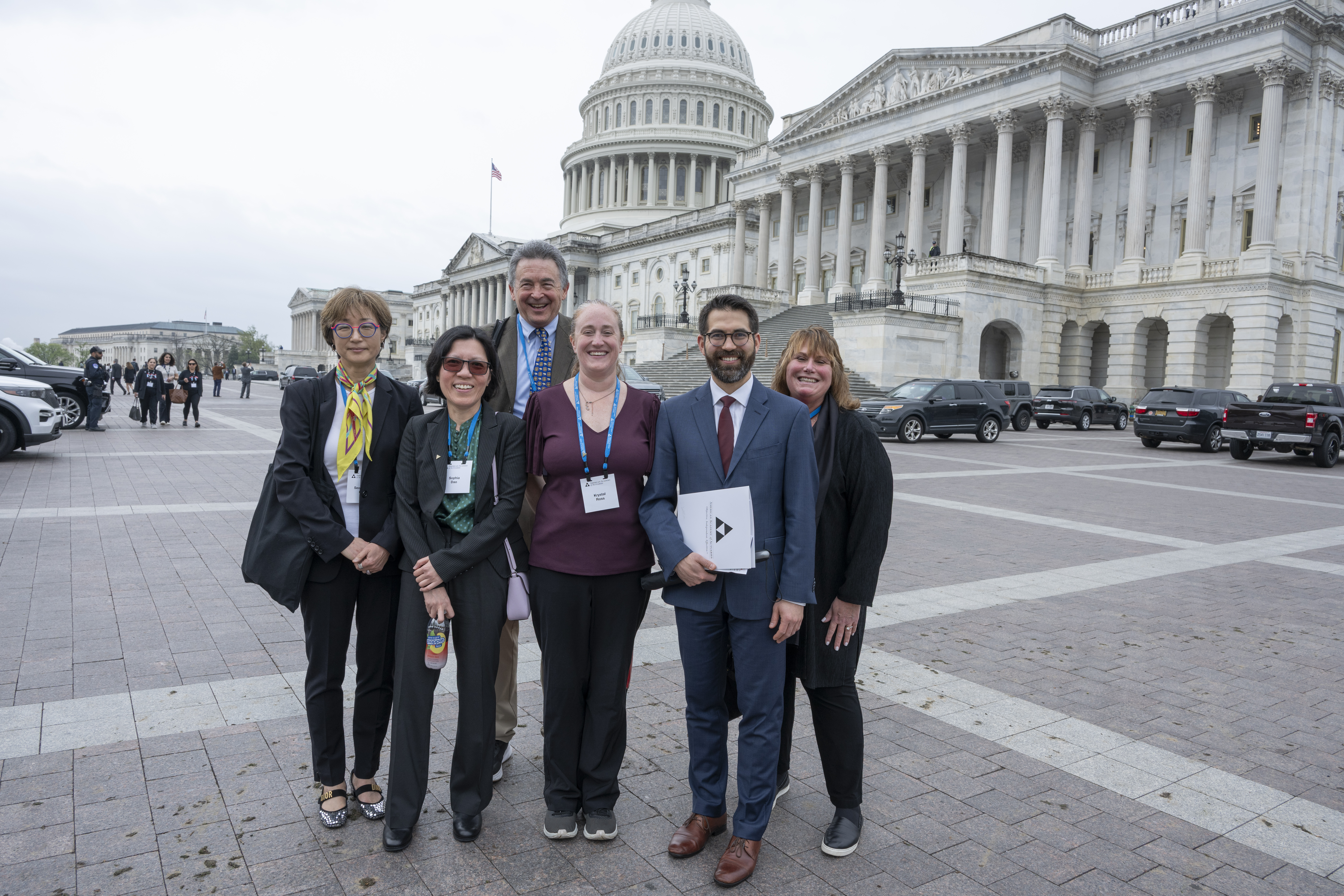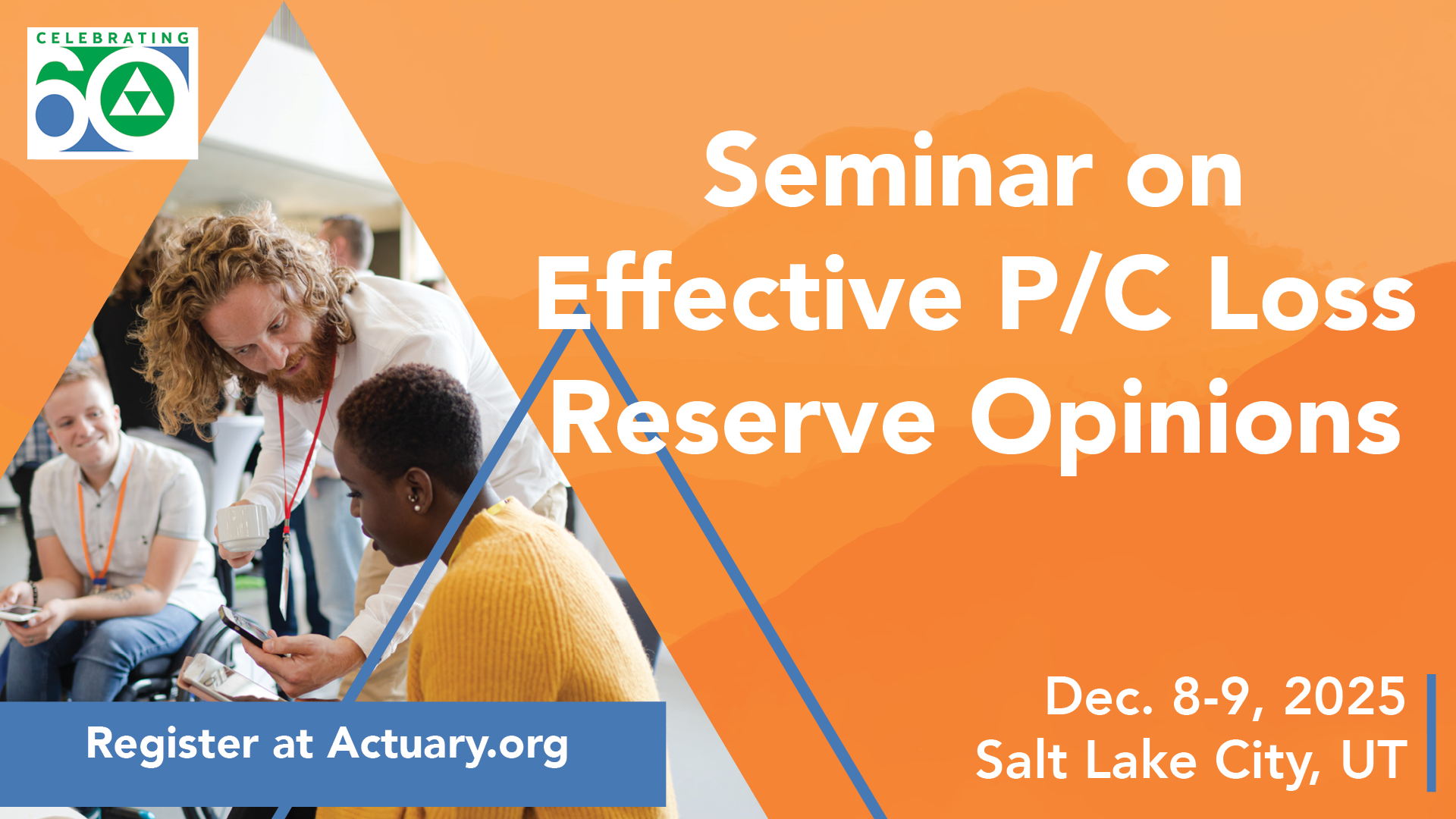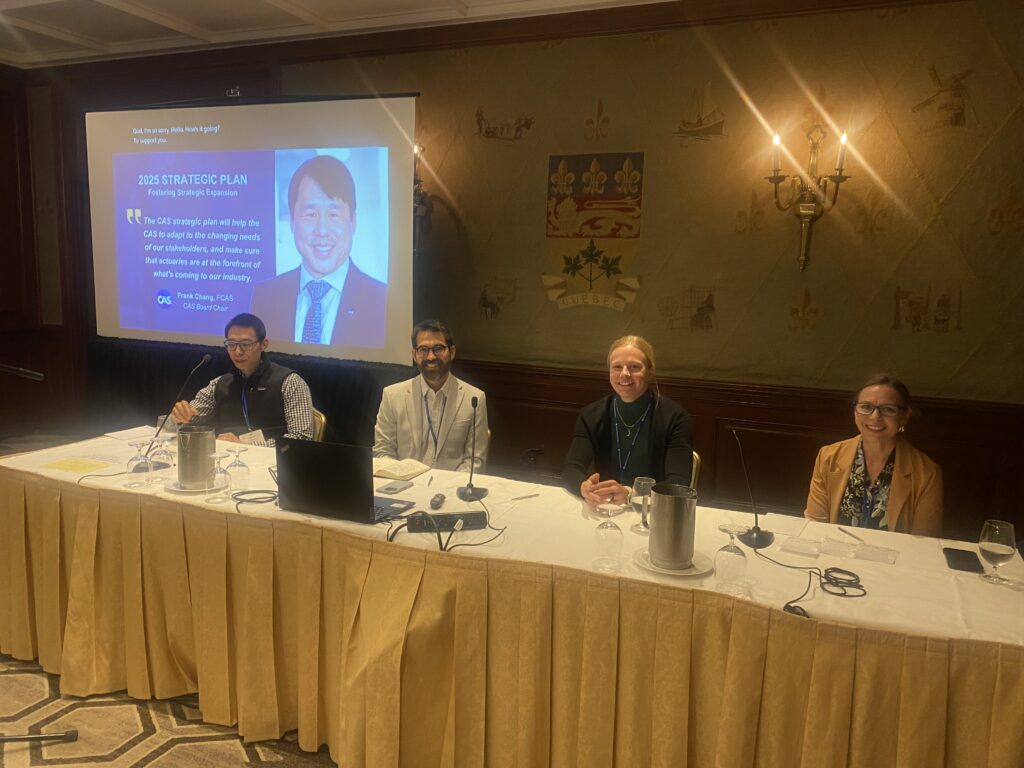Q&A-Commercial Liability Insurance


The newly formed Commercial Liability Insurance Task Force is looking at issues including social inflation, litigation financing, “nuclear” verdicts (verdicts of over $10 million), availability of insurance, and disruption of historical patterns. Casualty Quarterly asked Chairperson Bill Finn and Vice Chairperson Dawn Fowle to talk about some of the task force’s priorities and key issues.
“Commercial liability” is a fairly all-encompassing topic when it comes to insurance-what can you tell us about the direction the new task force will be exploring?
We are beginning with a survey of the current commercial liability landscape, exploring the major drivers of current liability trends as well as some of the unknowns. We expect to then pick a few of these drivers and do some deeper work and analysis into next year.
How have general commercial liability results changed in recent years?
As we look at published financial results and listen to company earnings calls, it is easy to see that companies are challenged in getting their arms around commercial liability lines. This includes commercial auto, as well as general liability and excess coverages. The trends are hard to measure and understand. In addition to that, the pandemic years of 2020-2022 really impacted the landscape by creating slowdowns in court activity and changing behavior. This has disrupted the historical patterns, creating even more noise in the data actuaries rely on to do their work.
Affordability has been a hot topic the past few years across all lines of P&C insurance. How might that impact commercial liability in 2025 and beyond?
This is something we will definitely be prioritizing. Availability and affordability of liability insurance is a real problem that has the potential to impact the general economy. We will be working with regulators to gain their perspectives on this issue and understand the classes of business and geographies that are under the most stress. We will also be taking a look at recently proposed or enacted tort reforms, to understand the potential impact on liability trends.
Social inflation has been a policy concern in recent years in med mal and workers’ comp. Does it impact general liability in similar ways?
Yes-and no. Social inflation will appear across multiple lines and have some similar impacts. That said, it is likely that there is a stronger impact on general liability than medical malpractice or workers’ comp. The drivers behind social inflation include things such as nuclear verdicts, which don’t impact workers’ compensation. Additionally, there is a trend toward delayed claim reporting in certain types of coverage, which will have a different impact on general liability occurrence policies than it would on med mal, which is largely claims-made. Finally, general liability includes a wide range of coverages and limits, including both primary and excess exposure. This variability in coverages makes it more challenging to identify exactly how and where social inflation is having the largest impact.
As you look at issues affecting the liability market, are you seeing challenges with availability of coverage either broadly or in specific segments of the market?
Yes, we are seeing availability of coverage as a key issue that has been raised, especially from a regulatory perspective. Insurers are still working to fully understand the impacts of social inflation on their own book of business, and to get rate increases that keep up with those trends. Further, there is concern that legal rulings have the ability to expand coverage in ways that insurers had not anticipated when they issued policies. As a natural reaction to this, and the resulting increased loss ratios, many companies are implementing stricter underwriting guidelines and/or adding exclusions or restrictions to coverage. The excess and surplus market is filling some of this gap, but we understand there are still exposures for which it is extremely difficult to find coverage.
Any other thoughts that you might have about the audience for the work that you are doing?
We have really just started our work, having only formed at the beginning of this year. We have a good mix of voices on the task force and have identified some areas that we believe are key issues in commercial liability, including social inflation, third party litigation funding, availability/affordability of coverage, and unintended exposure. However, we are certainly open to more voices and more input. If other members have any issues or concerns to add to our list to consider, we’d encourage them to reach out via the contact form below. We are also looking for additional volunteers, given the number of issues we are hoping to research, so we hope that other members raise their hands to volunteer with us!
▶ Interested in volunteering? The task force wants your input! Contact the group via the online Volunteer Contact Form.
Academy Conducts ‘Hill Visits’ With Federal Lawmakers in Washington
The Casualty Practice Council (CPC) participated in the Academy’s annual Hill Visits along with the other practice councils. Meeting with congressional staff on Capitol Hill in Washington in early April, the CPC volunteers highlighted key casualty and property priorities, along with other public policy issues.
More than 40 volunteers-including President Darrell Knapp, Immediate Past President Lisa Slotznick, Casualty Vice President Susan Kent, and other CPC volunteers – took part in the visits, covering issues including flood and homeowners’ insurance, the National Flood Insurance Program (NFIP), wildfire risk and mitigation, cyber risk and cyber insurance, and other P/C-related issues.
Casualty volunteers met “with people who are interested in wildfire risk, flood risk, AI, and homeowners’ insurance and availability,” Kent said of the CPC’s meetings, which were held in tandem with the Risk Management and Financial Reporting Council. “We’re looking to see where we can partner with some of the policymakers in those areas of the Academy’s expertise,” she added.
Volunteers and Academy staff visited key committee and congressional staff offices including the Senate Environment & Public Works Committee, Banking, Housing, and Urban Affairs, the House Homeland Security Committee, Natural Resources Committee, Education & Workforce Committee, and Financial Services.
▶ Actuaries in Action-Watch a one-minute video recapping the Hill visits on the Academy’s YouTube channel.
▶ Actuarially Sound-For more on the Hill visits, see the Actuarially Sound blog post.
CPC volunteer Sam Tashima, vice chairperson of the Committee on Cyber Risk, said his group met with Sen. John Hickenlooper’s staff to discuss cybersecurity issues and a cyber insurance bill under consideration.
“We were able to get more into the weeds than we were on most components, which I think was appreciated by both parties,” said Tashima, who was taking part in his fourth Hill visits, adding that cyber insurance is an important consideration for both small- and medium-sized businesses. “It helps them knowing what they can do to protect themselves and their businesses better,” he said.
Key CPC takeaways:
- Synergy with congressional policy priorities and CPC priorities, including cyber risk, flood and homeowners’ insurance, and climate issues;
- Committee staff interest in participating in Academy webinars/events along with specific requests for deeper dive follow-ups with key constituencies;
- Interest in recent CPC work products, including the NFIP monograph, the wildfires issue paper, and the Cyber Risk Toolkit.
Registration Open-Early Discounts Available for September’s CLRS
Secure an early-registration discount to the annual Casualty Loss Reserve Seminar (CLRS), sponsored jointly by the Academy and the Casualty Actuarial Society (CAS), which will be held Sept. 8-10 in Philadelphia. See the agenda for this year’s program, which reflects the theme, “Charting the Future With Reserving Insights.” Register today.

Registration Open for December’s P/C Loss Opinion Seminar
Registration is open and early registration discounts are available for the Academy’s annual Seminar on Effective P/C Loss Reserve Opinions, set for Dec. 8-9 in Salt Lake City. Called by one past attendee “a great distillation of changing requirements and rules, as well as a good pooling of experience,” the seminar is designed for P/C actuaries who prepare NAIC statements of actuarial opinion. Secure your early discount-register today.
Councils Comment to NOAA on Climate Database
The Casualty Practice Council, Risk Management and Financial Reporting Council, and Research Committee sent a comment letter to the National Oceanic and Atmospheric Administration (NOAA), strongly urging the reversal of the planned retirement of NOAA’s Billion-Dollar Weather and Climate Disaster Database.
“The Billion-Dollar database is one of the few publicly available databases with financial values for multiple types of catastrophic events,” said Academy Immediate Past President Lisa Slotznick, who is also a past chairperson of the Climate Change Joint Committee. “The value to actuaries is immeasurable as we quantify the costs of catastrophes and work to develop methods to recognize the impacts of remediation on the availability and affordability of insurance.”
The joint comments, in consultation with CAS, emphasize the continued need for large, public datasets that inform public policymaking and the day-to-day responsibilities of actuaries, academics, and insurance companies that directly impact consumers and communities.
CPC Presents at CAS, NAIC Spring Meetings
Academy staff and volunteers attended and presented at the CAS Spring Meeting in early May in Toronto. Committee on Cyber Risk members Kathryn Koch, Isabelle McCullough, and Vice Chairperson Sam Tashima presented in a cyber-risk roundtable discussion session. Academy volunteer leaders and staff also congratulated new CAS fellows and associates.
The CPC presented at several meetings during the NAIC’s March Spring National Meeting in Indianapolis, including P/C Risk-Based Capital (RBC) Chairperson Committee Ron Wilkins, who presented to the P/C RBC (E) Working Group on R4/R5 factors and the committee’s 2025 priorities.
Academy Presents on Climate at IAA Brazil Colloquium
Director of Research (Public Policy) Steve Jackson presented at JoCo 2025, the International Actuarial Association’s (IAA) Joint Colloquium in São Paulo, Brazil. Jackson presented “Are They Good Enough? Station-based and Reanalysis Measures of Climatic Conditions Compared,” discussing climate and sustainability issues and referencing the Academy’s collaborative research on the Actuaries Climate Index.
Professionalism Outreach
As part of the ongoing collaboration between the Academy and the CAS to support actuarial professionalism education, Actuarial Board for Counseling and Discipline Director of Professionalism Ed Lee delivered a professionalism session on June 3 at the CAS’s Course on Professionalism in Boston. Lee also delivered a virtual session for the Course on Professionalism on June 13.
General Counsel and Senior Director of Professionalism Brian Jackson presented at a CAS Course on Professionalism in Chicago on June 17.
Academy volunteer and Actuarial Standards Board (ASB) Casualty Committee member Dave Heppen spoke in person to the Casualty Actuaries of the Mid-Atlantic Region at St. Joseph’s University in Philadelphia on May 21.
Lauren Cavanaugh, a member of the PC Committee on Equity and Fairness and former VP of the CPC, participated in a panel discussion on Discrimination, Bias, Insurance and AI on behalf of the Academy at a recent University of Connecticut Law School Conference on May 30.
Immediate Past President Lisa Slotznick gave an overview of professionalism considerations in the context of generative artificial intelligence (GenAI), in “Professionalism: Keeping up in the Age of GenAI” at the CAS Seminar on Reinsurance in National Harbor, Md., on June 6.
Looking for a Speaker? The Academy’s Speakers Bureau provides qualified speakers on professionalism and public policy topics.

Highlights From
Casualty Quarterly
Prefer to watch your news? Check out this “Highlights From Casualty Quarterly” video for a quick recap of what you need to know.
ASOP No. 20 Exposure Open for Comment
The Actuarial Standards Board (ASB) is accepting comments on an exposure draft of Actuarial Standard of Practice (ASOP) No. 20, Analysis of Property/Casualty Cash Flows, Including Discounting, through Aug. 1. Read the exposure draft and comment on the ASB website.
In the News
A subscriber-only P&C Specialist story on the National Oceanic and Atmospheric Administration’s (NOAA) plans to retire the Billion-Dollar Weather and Climate Disasters Database shares concerns expressed by the Casualty Practice Council, Risk Management and Financial Reporting Council, and Research Committee in their joint June 5 comment letter to NOAA.
A new research paper on climate change and crop insurance published in the European Actuarial Journal includes discussion of the history and value of measures provided by the jointly sponsored Actuaries Climate Index (ACI) and similar indices that have been developed since the ACI’s launch in 2016.
The ACI is used in research on macroeconomic effects of severe weather shocks that was published in the American Economic Journal: Macroeconomics.
Legislative/Regulatory Activity
Federal
President Trump signed an executive order addressing the ability of states, localities, and citizens to prepare for incidents like cyberattacks and weather events. It creates a National Resilience Strategy that calls for, among other things, a review of all infrastructure, continuity, and preparedness policies.
Two sets of companion bills addressing the extension of the National Flood Insurance Program (NFIP) were introduced in the House and Senate. HR 2822, introduced by Rep. Troy Carter of Louisiana, and S 1015, sponsored by Sen. Bill Cassidy of Louisiana, would extend the NFIP through the end of 2026. Meanwhile, HR 2123, offered by Rep. Andrew Garbarino of New York, and S 824, introduced by Sen. John Kennedy of Louisiana, would extend the NFIP through Sept. 30.
HR 3437 was introduced by Rep. Scott Fitzgerald of Wisconsin, which would prohibit the Federal Insurance Office of the U.S. Treasury Department and other financial regulators from collecting data directly from an insurance company.
Sen. Patty Murray of Washington introduced S 1564 , which would amend the Homeowner Flood Insurance Affordability Act of 2014 to address ecosystem restoration projects.
Sen. Tim Scott of South Carolina introduced S 1545, a measure to amend the National Flood Insurance Act of 1968 to ensure community accountability for areas repeatedly damaged by floods.
State
Oregon Gov. Tina Kotek signed SB 85, directing specific state agencies to work with the insurance industry to study and suggest ways to reduce wildfire risks. It also creates a grant program to help property owners with wildfire resiliency.
Texas companion bills SB 455 and HB 2275 became law in late May without Gov. Greg Abbott’s signature. The law mandates that a surplus lines insurance contract for a risk located wholly in Texas that contains an arbitration agreement must conduct the arbitration in Texas and be governed by Texas law, unless the insurer and policyholder agree to a different venue. The law takes effect on Sept. 1.
Hawaii Gov. Josh Green signed HB 544 on May 19, establishing a regulatory framework for pet insurance based on the National Association of Insurance Commissioners’ Pet Insurance Model Act, as of Jan. 1, 2026.
Nevada Gov. Joe Lombardo signed AB 532 on May 19, lowering the minimum amount of insurance needed to be maintained for app-based transportation drivers from $1.5 million to $1 million.
Washington Gov. Bob Ferguson signed HB 1539, creating a working group to study and make recommendations on the development of wildfire property mitigation standards, as well as enhancing wildfire mitigation at the community level.
Ferguson signed SB 5141, in April, requiring that experience-rated group disability income insurers include all applicable rating factors and credibility formulas in rate manual filings with the insurance commissioner.
Georgia Gov. Brian Kemp signed SB 35, extending the notice a property/casualty insurer must give a policyholder before cancelling their policy from 30 to 60 days.
South Carolina Gov. Henry McMaster signed S 307, establishing insurance and liability procedures for peer-to-peer car sharing programs.
Montana Gov. Greg Gianforte signed HB 533 on May 8, requiring insurers to provide residential homeowners with their wildfire risk score, including key factors that negatively impact their rating.
Gianforte signed HB 78, creating the Montana Pet Insurance Act, creating a legal framework that provides requirements for pet insurance policies, wellness programs, and training programs.
Maryland Gov. Wes Moore signed HB 1098, requiring the Maryland Automobile Insurance Fund to calculate and report its risk-based capital level in accordance with certain provisions of insurance law, as well as form a work group to study automobile insurance affordability in the state.
Moore also signed HB 1148, prohibiting an insurer of residential condominium units from refusing to issue a policy based solely on a prior lapse in coverage.
Florida Gov. Ron DeSantis signed HB 655 on April 22, requiring pet insurers to make certain disclosures to pet insurance applicants and policyholders, including a summary of their bases for determination of claim payments under a pet insurance policy.
Maine Gov. Janet Mills signed LD 1, a measure to improve storm resiliency in the state by providing grants to homeowners for the purpose of performing home resiliency projects that better protect homes from damage.
Kansas Gov. Laura Kelly signed SB 42, creating a web-based online insurance verification system to check for evidence of motor vehicle liability insurance, eliminating the requirement that the commissioner of insurance submit reports to the governor and requiring those reports be available on the insurance department’s website.
Arkansas Gov. Sarah Huckabee Sanders signed SB 366, creating a new program to provide financial grants to property owners and nonprofit organizations to assist and promote the mitigation of losses to insurable dwellings due to catastrophic wind events, including hail.
Tennessee Gov. Bill Lee signed SB 696, a measure that increases the amount a domestic insurance company can invest in foreign assets from 5% of holdings to 10% of holdings.
Virginia Gov. Glenn Youngkin signed SB 1152, providing a combined $3 million minimum for the amount of professional and general liability coverage a nursing home or certified nursing facility must maintain.
Mississippi Gov. Tate Reeves signed HB 1611, requiring property and casualty insurers to give at least 45 days’ notice regarding the renewal, cancellation, or reduction of coverage for any related policy.
Casualty News in Brief
The CPC submitted comments on the exposure draft of Actuarial Standard of Practice (ASOP) No. 39, Treatment of Catastrophe or Extreme Event Losses in Future Cost Estimates for Property/Casualty Risk Transfer and Risk Retention.
The P&C Committee on Equity and Fairness submitted comments to the Colorado Division of Insurance (DOI) on the exposed template of the DOI’s upcoming data call on private passenger auto insurance as part of the implementation of CO SB21-169, Protecting Consumers from Unfair Discrimination in Insurance Practices.
Read more-For the latest updates on the Academy’s P/C-practice work, visit the Casualty Public Policy page.


